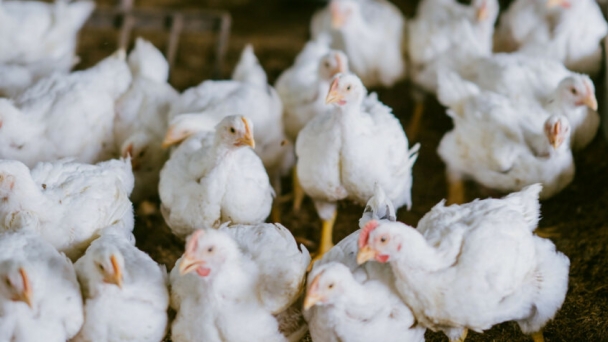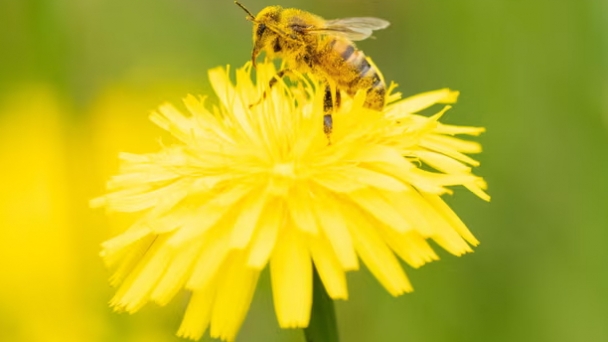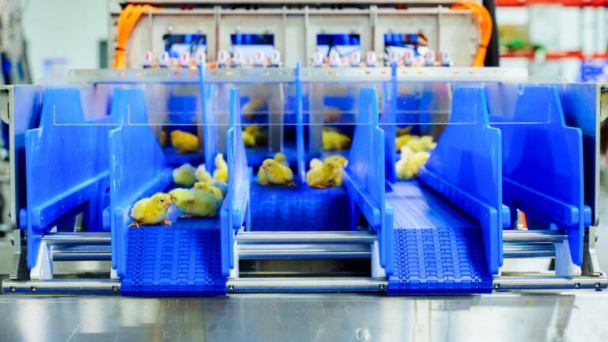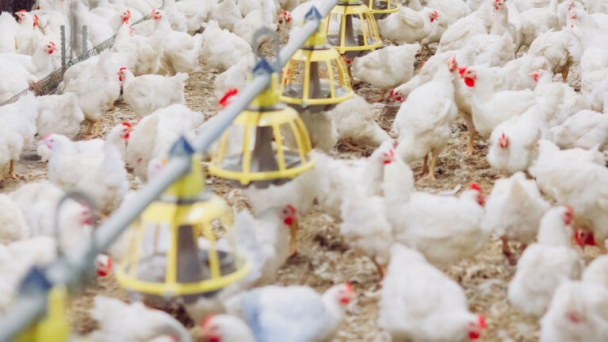January 26, 2025 | 16:40 GMT +7
January 26, 2025 | 16:40 GMT +7
Hotline: 0913.378.918
January 26, 2025 | 16:40 GMT +7
Hotline: 0913.378.918
By employing precision gene engineering techniques, the scientists have demonstrated that it is possible to efficiently manage the production of these complex molecules without interfering with the plant’s normal growth process.
Pheromones are intricate chemical substances produced and released by organisms as a means of communication. They enable members of the same species to transmit signals to one another, including those related to mating. Farmers have long exploited this natural phenomenon by hanging pheromone dispersers among their crops to mimic the signals emitted by female insects, subsequently trapping or distracting males from finding a mate. While some of these molecules can be synthesized through chemical processes, traditional chemical synthesis can be costly and often results in the creation of toxic byproducts.
Dr. Nicola Patron, who spearheaded this innovative research and leads the Synthetic Biology Group at the Earlham Institute, is utilizing cutting-edge science to coax plants into producing these valuable natural products. Synthetic biology, which applies engineering principles to DNA, the building blocks of life, allows Dr. Patron and her team to construct genetic modules containing the instructions necessary for generating new molecules. This approach enables the researchers to transform plants, such as tobacco, into factories that require nothing more than sunlight and water to function.
“Synthetic biology can allow us to engineer plants to make a lot more of something they already produced, or we can provide the genetic instructions that allow them to build new biological molecules, such as medicines or these pheromones,” Dr. Patron explained.
In their latest study, the researchers collaborated with scientists at the Plant Molecular and Cell Biology Institute in Valencia to engineer a species of tobacco, Nicotiana benthamiana, to produce moth sex pheromones. Notably, this same plant has been previously engineered to generate Ebola antibodies and even coronavirus-like particles for use in COVID-19 vaccines.
To achieve this remarkable feat, the Synthetic Biology Group designed new sequences of DNA in the laboratory to mimic moth genes. They also introduced a series of molecular switches to precisely regulate the expression of these genes, effectively turning the manufacturing process on and off as needed.
This cutting-edge research not only offers an environmentally friendly alternative to traditional chemical synthesis, but also demonstrates the immense potential of synthetic biology in revolutionizing the production of valuable molecules such as medicines and pheromones.
Fine-tuning pheromone production
A critical aspect of the Earlham study is the fine-tuning of pheromone production in genetically engineered plants. Dr. Patron explained that compelling plants to continually produce these molecules can have negative consequences. “As we increase the efficiency, too much energy is diverted away from normal growth and development,” she said. “The plants are producing a lot of pheromone but they’re not able to grow very large, which essentially reduces the capacity of our production line. Our new research provides a way to regulate gene expression with much more subtlety.”
To address this challenge, the team focused on testing and refining the control of genes responsible for producing the specific molecules that mimic the sex pheromones of various moth species, including navel orangeworm and cotton bollworm moths.
Their experiments demonstrated that copper sulfate, a cheap and readily available compound already approved for agricultural use, could be employed to fine-tune the activity of these genes, enabling the researchers to control both the timing and level of gene expression.
The scientists even managed to precisely control the production of different pheromone components, allowing them to tailor the mixture to better suit specific moth species.
“We’ve shown we can control the levels of expression of each gene relative to the others,” Dr. Patron said. “This allows us to control the ratio of products that are made. Getting that recipe right is particularly important for moth pheromones, as they’re often a blend of two or three molecules in specific ratios. Our collaborators in Spain are now extracting the plant-made pheromones and testing them in dispensers to see how well they compare to female moths.”
The team envisions that their work will open the door to utilizing plants for the routine production of a wide array of valuable natural products. “A major advantage of using plants is that it can be far more expensive to build complex molecules using chemical processes,” Dr. Patron noted. “Plants produce an array of useful molecules already, so we’re able to use the latest techniques to adapt and refine the existing machinery. In the future, we may see greenhouses full of plant factories – providing a greener, cheaper, and more sustainable way to manufacture complex molecules.”
This innovative research is part of the SUSPHIRE project, which received support from ERACoBiotech funded by the Horizon 2020 research and innovation program and the UKRI Biotechnology and Biological Sciences Research Council (BBSRC).
Benefits and pitfalls of genetically engineering plants
Genetically engineering plants has the potential to offer numerous benefits, but it also raises some concerns. Here, we discuss the potential ramifications and benefits of genetically engineering plants:
Benefits:
Enhanced nutritional content: Genetic engineering can increase the nutritional value of plants by adding essential vitamins and minerals, which can help combat malnutrition and micronutrient deficiencies in various populations.
Increased crop yield: Genetically modified (GM) crops can be engineered to be more resistant to pests, diseases, and adverse environmental conditions, such as drought or extreme temperatures, leading to increased crop yields and overall agricultural productivity.
Reduced pesticide use: GM crops that are pest-resistant can reduce the need for chemical pesticides, which can have harmful effects on the environment and human health.
Improved food shelf life: Genetic engineering can lead to the development of crops with extended shelf lives, reducing food spoilage and waste.
Biofortification: Genetically engineered plants can be developed to produce valuable substances, such as pharmaceuticals, biofuels, or industrial enzymes, providing an efficient and sustainable production method.
Environmental sustainability: GM crops can contribute to more sustainable agricultural practices by requiring fewer inputs (such as water, fertilizers, and pesticides) and reducing soil erosion through no-till farming techniques.
Ramifications:
Unintended consequences: Genetic engineering might have unforeseen effects on the ecosystem, as the introduction of novel genes into plants could potentially disrupt natural processes and interactions between species.
Gene flow and cross-contamination: The transfer of genes from GM crops to non-GM crops or wild relatives through cross-pollination may lead to the unintentional spread of engineered traits, potentially affecting biodiversity and creating “superweeds” resistant to herbicides.
Monoculture and loss of biodiversity: The widespread adoption of GM crops could lead to the dominance of a few crop varieties, reducing genetic diversity and making the agricultural system more vulnerable to pests, diseases, and climate change.
Ethical concerns: Genetic engineering raises ethical questions about the manipulation of life, the potential commodification of living organisms, and the ownership of genetic resources through patents and intellectual property rights.
Socioeconomic implications: The control of GM technology by a small number of large corporations could exacerbate economic inequality, as small-scale farmers might struggle to compete with large-scale, industrialized agriculture.
Allergenicity and food safety: Some individuals have concerns about the safety of GM foods, particularly the potential for new allergens or unexpected health effects.
In summary, genetically engineering plants offers several benefits, such as increased crop yields, enhanced nutritional content, and reduced pesticide use. However, it also raises concerns about potential environmental, socioeconomic, and ethical ramifications. To maximize the benefits and minimize the risks, it is crucial to thoroughly evaluate each GM crop and its potential impacts through rigorous research, responsible regulation, and transparent communication with the public.
(Earth)

(VAN) The inability of poultry breeding companies to prevent chicks from being infected with a bacteria is forcing producers to turn to antibiotics at an early stage.

(VAN) The World Bank’s agricultural prices index gained momentum in the second half of 2024, propelled by record-breaking price increases in beverages.

(VAN) Even average use of nitrogen fertilisers cut flower numbers fivefold and halved pollinating insects.

(VAN) In 2025, the global poultry market is heading even faster towards technological revolution, and automation is at its core.

(VAN) Updated ammonia emission factors for UK poultry and pig producers have been introduced by the Environment Agency.

(VAN) The Food Systems Countdown Initiative report identifies governance and resilience as pivotal leverage points for food system transformation.

(VAN) Since cattle imports were cut off in November, Texas Agriculture Commissioner Sid Miller and some ranchers worry about the ban’s economic impact on beef producers and consumers.